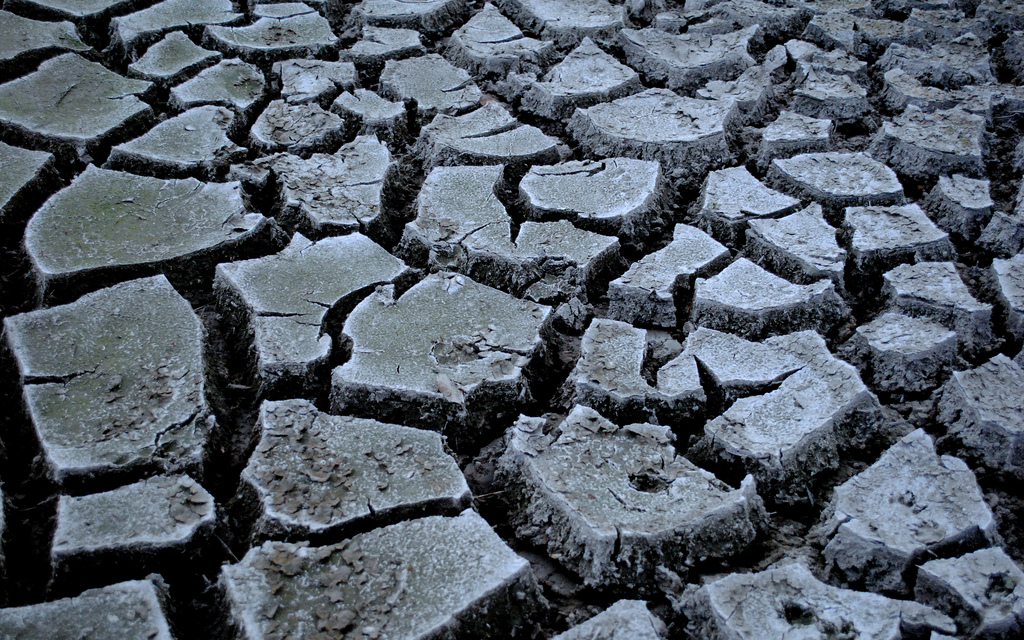Even though Austin got walloped with a series of massive, damaging downpours in May and June, the drought has returned with a vengeance. That’s got local fire departments worried, electricity managers asking for conservation, and water planners cutting back.
In Caldwell County, which has returned to “severe drought,” farmer Rudy Schroeder told ABC News affiliate KVUE-TV that he hasn’t seen rain in nearly 90 days. “It would be great for pastures and cattle and everything else that’s growing. And you’d like to have it this time of year,” he said.
Travis County is also in extreme drought right now and a burn ban went into effect on July 28 (PDF link). While this doesn’t affect anyone with a BBQ grill that has a closing lid, the county does require anyone working with potentially flammable materials to obtain a permit and work under the supervision of a fire manager.
It’s so hot out right now that a teen in Allen, Texas recently photographed a pair of athletic shoes that melted during an extended outdoor practice. Check it out:
Wanna know how hot it is in Texas? Anthony Taylor, of Allen High School, had his cleat melt during the 106 degree heat. That’s how hot.
Posted by Texas Humor on Wednesday, August 12, 2015
Just to drive the point home, YouTuber SoFloAntonio posted a video showing that it is actually possible to cook meat on a skillet set out in the middle of a street in this kind of heat…
HOW TO COOK IN TEXAS ????????LIKE FOR MORE ➡️ SoFloAntonio
Posted by SoFloAntonio on Monday, August 10, 2015
As all Texans know, when it gets HOT like it has been the last couple weeks, everything needs more water and more energy. That’s why the drought designation is so important — because we automatically start saving both.
As such, the City of Austin has issued a Stage 2 Water Restriction, because water levels in Lake Travis and Lake Buchanan have fallen below their designated minimum supply level. Stage 2 restrictions mean there’s only one day per week that residential, commercial, and governmental buildings may water their lawns. To find out where your property fits on this schedule, check out the City of Austin’s website.
The Electric Reliability Council of Texas (ERCOT) is also asking for Texans’ help cutting back on energy use during peak hours, between 3 p.m. and 7 p.m. Demand for power in Texas exceeded an all-time record of 69,000 megawatts in July, and we hit that same level several times again in August, setting the latest record of 69,783 megawatts last Monday, August 10. Using its app and media channels, ERCOT issued an “emergency alert” on Thursday about energy usage across Texas, but later amended it to a “conservation alert” as temperatures surpassed 108 degrees in some parts of the state.
ERCOT suggests adjusting air conditioners to 78 degrees during the afternoon hours, avoiding appliance use during that same time, and closing all blinds and drapes to block out the sun and help keep your home cool. For more energy-saving tips and real-time information about the energy supply, cost of power, and more, check out the ERCOT smartphone app for iOS or Android.
As for the heat itself, scientists say we’re to expect more of the same in years to come, and worse. “In Central Texas, temperatures in the annual mean have increased almost 1 degree Fahrenheit so far, and we’re expecting more increases in the future,” University of Texas Climate Researcher Dr. Kerry Cook told NBC News affiliate station KXAN-TV in May.
If governments continue permitting the use of dirty fuel sources that emit heat-trapping gasses, the U.S. Global Change Research Program forecasts that Texas will experience nearly twice as many days over 100 degrees per year by the end of this century, along with deeper, stronger droughts, more devastating floods, more competition for declining water resources, and dramatically reduced crop and cattle output.
Thankfully, the City of Austin is one of more than 70 cities worldwide that’s taking strong action on climate change. The council voted 8-2 in June for a plan that will bring the city down from our current emissions level of roughly 15 million metric tons of CO2 per year to “net-zero emissions” by 2050.
——
Featured photo: Flickr user Sean Loyless, creative commons licensed.








